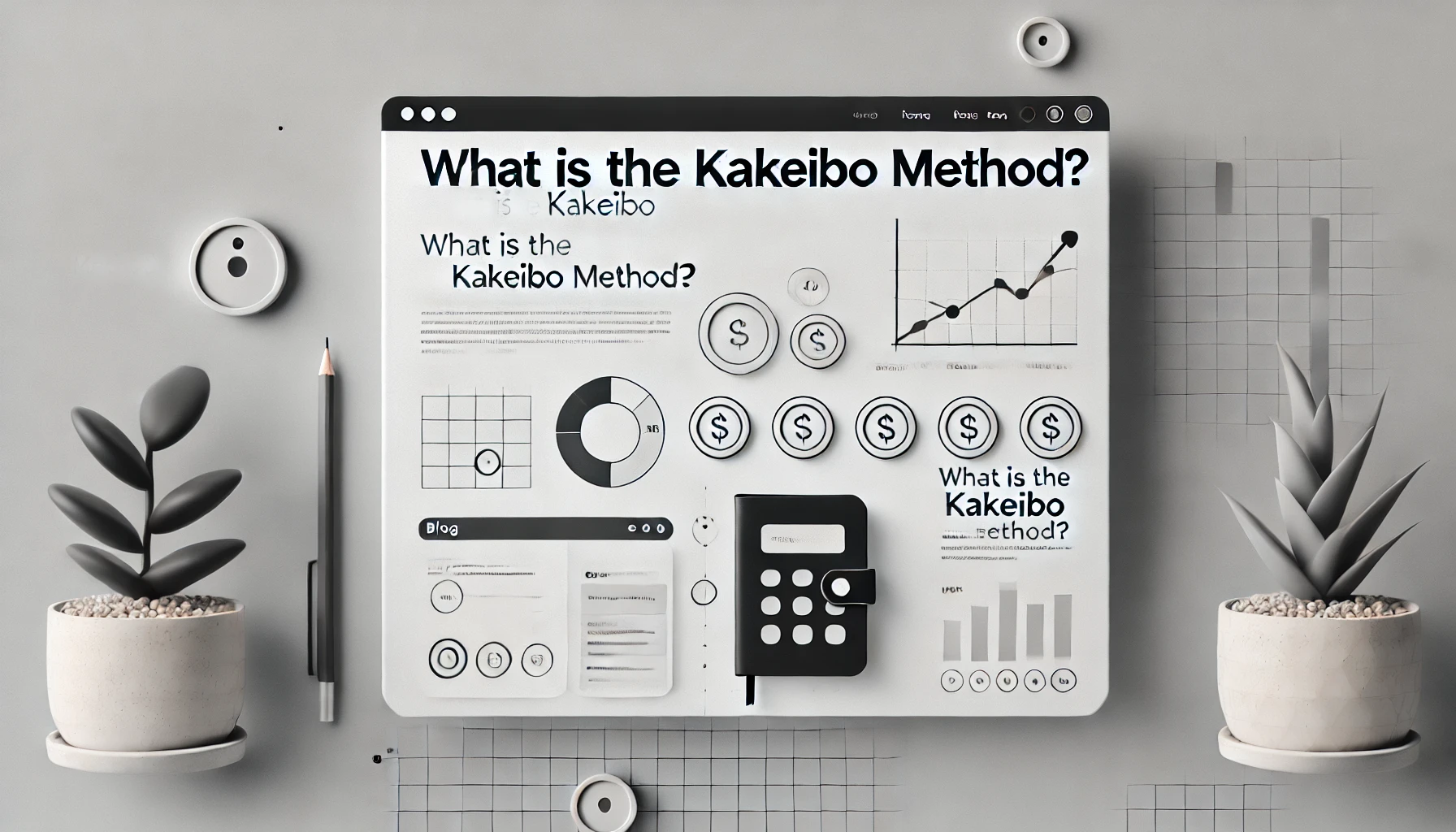Managing personal finances can be challenging, especially in today’s fast-paced world, where expenses quickly pile up. This is where the Kakeibo method comes into play. Originating from Japan, this budgeting technique is designed to help individuals become more conscious of their spending habits. In this post, we will dive deep into how the Kakeibo method works, its advantages, and how you can apply it in your life.
Kakeibo, which translates to “household financial ledger,” is not just about tracking expenses; it’s about developing mindfulness in managing money. The method, which dates back to 1904, was introduced by Hani Motoko, Japan’s first female journalist. Through this method, people are encouraged to reflect on their finances and gain a clear understanding of where their money goes.
How Does the Kakeibo Method Work?
Kakeibo is simple yet highly effective. At its core, it involves dividing your finances into four key categories:
- Needs: Essential items that you cannot live without, such as food, rent, utilities, and medical expenses.
- Wants: Non-essential items that enhance your quality of life, like entertainment, dining out, or new clothes.
- Culture: Expenses that contribute to self-improvement and learning, such as books, museum visits, and educational courses.
- Unexpected: Unplanned costs, such as emergency medical bills or home repairs.
By categorizing your expenses, the Kakeibo method makes it easier to identify where your money is going and to determine what can be cut back. Additionally, it encourages a mindful approach to spending, asking key questions before making a purchase: “Do I need this?”, “Can I afford it?”, and “Will this item bring me happiness or fulfill a long-term goal?”
The Four Fundamental Kakeibo Questions
One of the cornerstones of the Kakeibo method is asking yourself four critical questions each month:
- How much money do I have? At the beginning of each month, write down your total income. This gives you a clear starting point.
- How much do I want to save? Set a savings goal for the month. This could be a percentage of your income or a fixed amount.
- How much am I spending? Track all your expenditures throughout the month and categorize them into needs, wants, culture, and unexpected.
- How can I improve? At the end of each month, review your spending and assess if you can improve in any area. Were there any unnecessary expenses? Can you save more next month?
These questions help instill a habit of constant reflection, which is essential for long-term financial improvement.
Kakeibo and Indian Households
While the Kakeibo method originated in Japan, its principles can be easily adapted to Indian households. India, being a country with diverse cultures and spending habits, can benefit greatly from a structured budgeting method like Kakeibo. The rising costs of living, coupled with lifestyle inflation, have made mindful spending more important than ever.
For instance, Indians often spend a significant portion of their income on education, healthcare, and festivals. By implementing the Kakeibo method, families can allocate funds wisely, ensuring that essential needs are met without overspending on non-essentials. Additionally, it can help individuals save for future investments, such as children’s education or retirement.
Advantages of the Kakeibo Method
- Increased Awareness: Kakeibo forces you to think critically about your spending habits, which can lead to more mindful purchasing decisions.
- Better Savings: By setting a savings goal at the beginning of each month, you’re more likely to reach that goal.
- Reduced Stress: Knowing exactly where your money is going can reduce financial stress and help you avoid debt.
- Simplicity: Unlike complicated financial apps or software, Kakeibo requires only a notebook and a pen, making it accessible to everyone.
Kakeibo in a Digital Age
While Kakeibo is traditionally done with pen and paper, you can easily adapt it to modern tools. Many people use Excel spreadsheets or budgeting apps to track their spending and savings goals. However, sticking to the original method can help you slow down and become more intentional with your money.
Digital tools can sometimes disconnect us from the physical reality of money. Writing down each expense manually forces you to pause and reflect on whether it was necessary. This intentionality is a core part of the Kakeibo philosophy and what makes it so effective in creating sustainable financial habits.
Step-by-Step Guide to Start Using Kakeibo
- Set Up Your Ledger: Begin with a simple notebook or a digital ledger. Write down your total monthly income at the start of each month.
- Categorize Your Expenses: Break down your spending into the four categories mentioned earlier (needs, wants, culture, unexpected). As you spend, note down which category each expense falls into.
- Define Your Savings Goal: Based on your income and expected expenses, set a realistic savings target for the month. The goal should be achievable yet motivating.
- Track Your Progress: Throughout the month, consistently update your ledger, making sure to keep track of every rupee spent.
- Monthly Reflection: At the end of the month, review your ledger. Reflect on what went well, where you overspent, and how you can improve next month.
- Adjust for Next Month: If you found yourself overspending in certain categories, adjust your budget for the following month. The goal is not perfection but continuous improvement.
Practical Tips for Implementing Kakeibo
- Be Honest with Yourself: When filling out your ledger, be completely transparent about where your money is going. Ignoring certain expenses will only hurt your long-term financial goals.
- Start Small: If the thought of tracking all your expenses feels overwhelming, start with just one category, like “wants.” Once you feel comfortable, expand to include other categories.
- Use Cash for Purchases: One way to stay mindful of your spending is to use cash instead of credit or debit cards. With cash, you’re more likely to think twice before making a purchase.
- Involve the Family: If you’re managing a household, involve your family in the Kakeibo process. This ensures everyone is on the same page about spending and saving goals.
- Review Regularly: Don’t just wait until the end of the month to review your spending. Take a few minutes every week to assess how you’re doing and make any necessary adjustments.
Common Pitfalls to Avoid
- Being Too Rigid: While it’s important to track your spending, don’t be too strict with yourself. If you overspend one month, don’t be discouraged—use it as a learning opportunity.
- Not Tracking Small Purchases: Small expenses, like a cup of coffee or a snack, can add up over time. Make sure to include these in your ledger.
- Skipping Reflection: Reflection is a key part of the Kakeibo method. Without it, you’re just tracking numbers, not learning from your spending habits.
Conclusion: Why Kakeibo is a Game-Changer
The Kakeibo method offers more than just a way to track expenses—it provides a holistic approach to financial mindfulness. By asking the right questions and categorizing your spending, you can develop a deeper understanding of your financial habits. Whether you are struggling to save or just want to take control of your finances, Kakeibo can guide you toward a more financially secure future.
Adopting the Kakeibo method in India can help individuals and families build better financial health by encouraging mindful spending and prioritizing savings. With rising living costs, the simplicity and effectiveness of Kakeibo make it a valuable tool for anyone looking to improve their financial situation.

ITR 1 vs ITR 2
Filing your Income Tax Return (ITR) accurately is crucial for every taxpayer in India, and …

What Is Tax Loss Harvesting?
Tax loss harvesting is a strategy that allows investors to reduce their taxable capital gains …

What Is Form 12BB?
Form 12BB is a vital document in the Indian taxation system that employees need to …

Short-Term Vs Long-Term Capital Loss
Investing in various assets like stocks, real estate, or mutual funds can lead to capital …

Section 80D of Income Tax Act
Health insurance is not only essential for safeguarding your well-being, but it also offers tax-saving …

Senior Citizen Saving Scheme
The Senior Citizen Saving Scheme (SCSS) is a government-backed savings scheme specifically designed to provide …

Income Tax on Profit from Commodity Trading in India
Commodity trading has become a significant part of financial markets in India, providing investors with …

Income Tax Benefit with the NPS Scheme
The National Pension System (NPS) is a government-sponsored retirement savings scheme in India designed to …

What Is Cost Inflation Index (CII) In India?
The Cost Inflation Index (CII) is a crucial concept in Indian taxation, particularly when calculating …

Understanding How Income Tax is Levied on Stock Market Transactions
The Indian stock market has become an increasingly popular avenue for individuals looking to grow …

Investment Options under NPS
The National Pension System (NPS) is a government-sponsored retirement savings scheme that allows individuals to …

How to Start Contributing to Your PPF Account?
The Public Provident Fund (PPF) is a government-backed savings scheme in India that offers tax …

Tax incentives for startups in India
The Indian startup ecosystem is one of the fastest-growing in the world, attracting both domestic …

Periodic vs Annual Tax Planning
Tax planning is an integral part of financial management that every taxpayer should consider. Whether …

How to Do Tax Planning for a Higher Salary?
Tax planning is crucial for individuals with higher salaries in India. As income increases, so …

How to Understand P&L Statement
A Profit and Loss (P&L) statement, also referred to as an income statement, is one …

What is the Kakeibo Method?
Managing personal finances can be challenging, especially in today’s fast-paced world, where expenses quickly pile …

What is Angel Tax?
In India, the startup ecosystem has seen tremendous growth over the past decade. Entrepreneurs and …

Difference Between TDS and TCS
In India, tax collection plays a critical role in the functioning of the government. To …


















